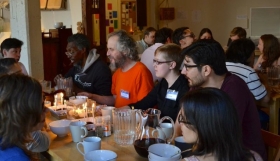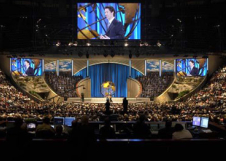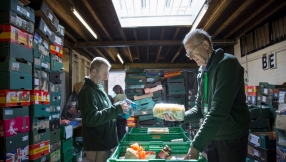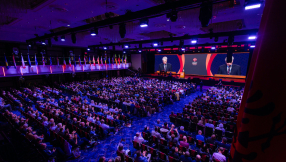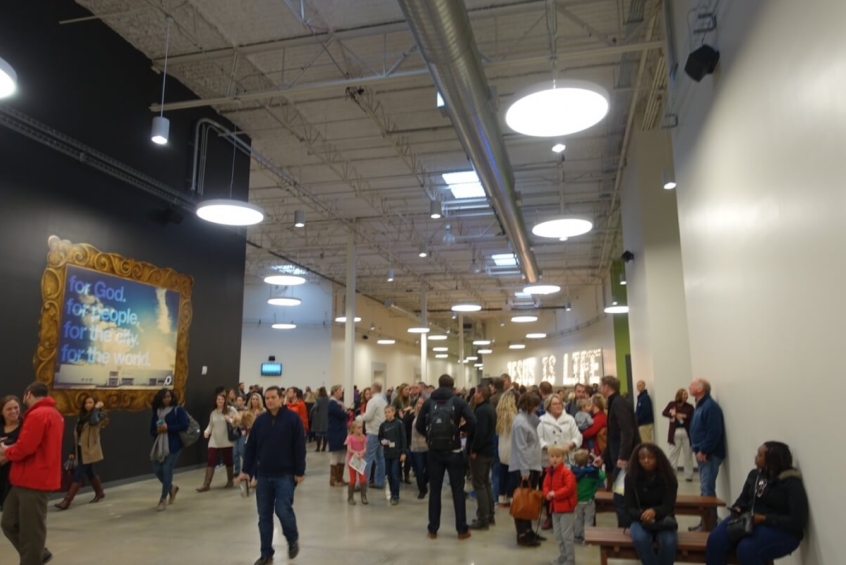
My church could definitely not be described as a megachurch. Cramped into a school hall on a Sunday morning, if you count all the adults, children and even babes in arms we're about 100 people all in. Looking back over the course of my Christian life I have always chosen to be part of small to average sized churches. Indeed I believe that smaller churches have unique opportunities for the transformation of local communities and the formation of mature disciples. But occasionally when I travel, I take the opportunity to visit a megachurch to see what all the fuss is about, and whether there is something we could take away and learn from.
Last month I visited Passion City Church in Atlanta. Over the course of three services they get around 6,500 people in the building. Not bad for a six-year-old church. They did have quite a few things going for them as they got started – it's in the Deep South of America, an area of the US with a large church-attending population. It was formed out of a monthly youth outreach drawn together by the impressive collaboration of best-selling worship leader Chris Tomlin and the speaking gifts of Louie Giglio. But nothing can take away from the vision and excellence the team have brought to this new church. In fact, the church building is a creative and entrepreneurial hub. It hosts three collaborative ministries: the Passion Conference, which in January saw over 40,000 students come together across three venues in Atlanta, SixStepsRecords which features artists such as Dave Crowder, Matt Redman and Chris Tomlin, and finally Passion City Church itself.
Turning up at the church was an impressive experience. It took a while to find somewhere to park as so many people had turned up for the service. But once we did find a spot it wasn't long before we were whisked away by a handy shuttle bus service to the door of the church. We were then greeted by friendly (but not so friendly you'd be embarrassed) staff. The building itself was breathtaking in a minimalist but engaging way. We loitered in the large entrance area which could easily accommodate over two thousand people, to sip coffee and admire the ever changing artistic/informative installations. When it was time to begin the service we were invited into a darkened, windowless auditorium and our senses were treated to a cinematic-quality intro video which retold the story of the universe with Jesus as the central character. Kristian Stanfill and a 40-strong choir then proceeded to lead 2,500 young adults in sung worship. The production values in video and music were comparable to any rock concert or media event I have ever attended. Giglio dressed casually and, with minimal notes and almost no visuals, spoke for 75 minutes straight and was gripping and inspiring throughout. The interactions I had with welcomers and stewards were professional, friendly and helpful. Without doubt it would have been easy to invite friends to come and check out this church without fear of embarrassment. So without attempting to 'recreate' the whole experience in my church – which would be somewhat overwhelming both as an event and as a task, let alone destructive of the positives of my small church – what could I learn from this megachurch that would be helpful? Here are five questions and ideas.
1. Do aesthetics matter?
The first thing that hits you about Passsion City Church is not just its scale but the high value they place on look and feel. There is a very clear intentionality when it comes to everything from the colour scheme to the fonts and signage. For example, the children's work is housed in a beautiful and cavernous room but is made to feel intimate by each group having its own marquee pitched around an indoor pond area. The booths in the large atrium entrance hall and coffee area are made up of tastefully refurbished industrial containers which are constantly being updated and redone so as to attract people to come and take a look inside. The picture below shows a sign up area for community groups:
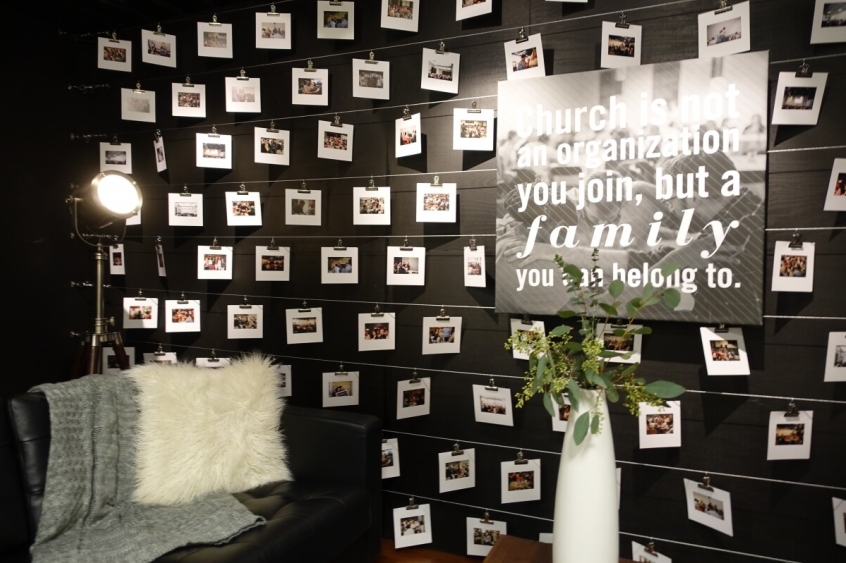
Even the back office space is of a quality that would not look out of place in Google or Apple's global headquarters. It was hard not to be jealous of the scale, beauty and resources that a church like Passion City has at its disposal. Churches throughout the centuries have harnessed aesthetics to help worshippers to focus their attention on God and his glory, and although there were no classical architectural pieces or stained glass windows, Passion City had found ways of applying those same values into a modern context. My local church family meets in a primary school surrounded by children's artwork: pack up and set down is one of the weekly challenges of a church seeking to serve its community with limited resources. But I don't think you have to spend a fortune in order to take aesthetics seriously. Creative use of projectors, background music, and notice boards done with a little care and love can make a huge difference. If you have guests to your home for dinner, whether you live in a mansion or a studio flat, you'd probably make some effort to tidy up, set the table, put out some flowers or napkins, and prepare your best culinary talents. These little touches help your visitors to feel valued as effort has been taken to show hospitality. Similarly, however big or small our churches may be, it is worth thinking how we can express value and welcome to people who walk through the door. The photo below shows how this can be applied in a smaller church context:
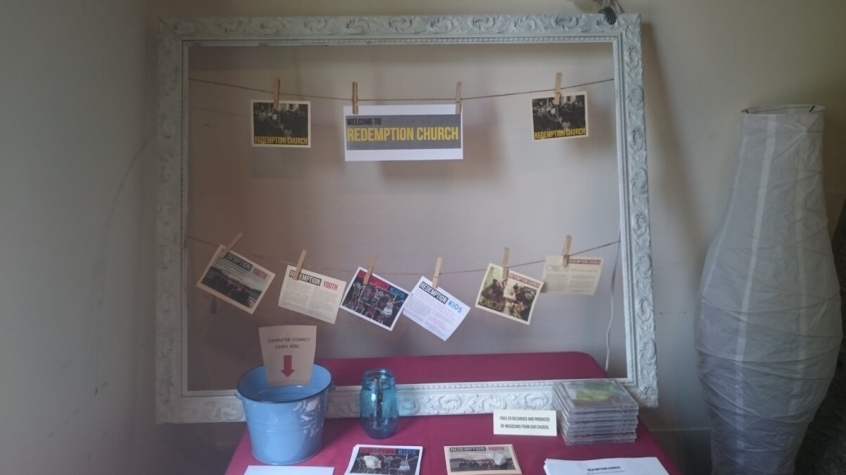
2. Do we need a mindset shift about volunteers?
Passion City Church is a very large church. It seems to have plenty of money and has 80 employees who work at the church and also run the Passion conference. Yet the church is still very dependent on volunteer support to run its programmes. Volunteers make Sundays, and almost everything else that the church does, happen. But you will not hear the word "volunteer" at any of Passion City's gatherings. Instead, the term "Door Holders" is used. "Doorholders are people who've been on the inside and experienced Jesus and are willing to open the door for others to be welcomed in." This is a vision of service inspired by King David: "Better is one day in your courts than a thousand elsewhere; I would rather be a doorkeeper in the house of my God than dwell in the tents of the wicked," (Psalm 84:10).
I'm not sure this particular term translates everywhere, but I believe language is important. The word volunteer may seem to give the impression of conscription or recruitment to a rota, but the roles that people play in their church should have more to do with their unique spiritual gifting, and their potential to join in with God's mission to the world.
Small changes in terminology from "tea and coffee rota" to "hospitality team", or "music rota" to "worship facilitators" may make a big difference in the attitude and availability of our lay workers.
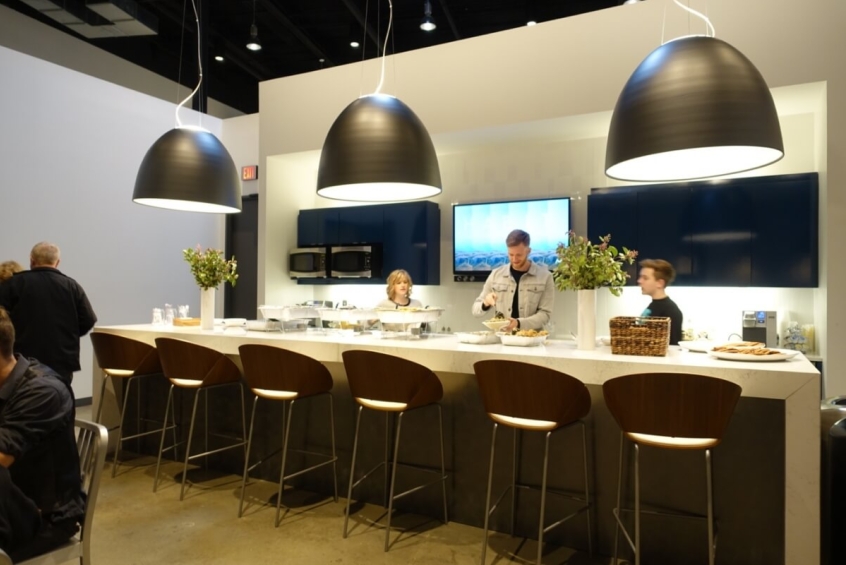
Passion City has also made a space for "Door holders" in the church to leave their bags and coats and chill out when they are not on duty. It reminded me a little of a quality airport lounge and signalled a status in the church. More than that, I liked the way it recognises that those who take on time-consuming responsibilities often miss out on the social and spiritual times in an average service, and tried to provide a space where that could happen. Most of our churches don't have the resources to provide such a space, but perhaps are there other ways that we can honour those who serve amongst us in the church. Perhaps if we found ways to demonstrate a culture of gratitude and honour, people might be more willing to step forward and serve?
3. Are you building a church or a preaching ministry?
Louie Giglio is a very gifted preacher. He spoke for well over an hour to a packed auditorium of young adults. There was no interaction and minimal visuals; just clear and simple Bible teaching with a heavy emphasis on personal transformation and application. Megachurches are often built around an exceptionally gifted preacher; indeed I have often wondered whether some megachurches are really churches at all, and should be considered as preaching ministries instead. In those situations when the preacher leaves, the church implodes – recent examples include Mark Driscoll in Mars Hill, Seattle and Rob Bell in a very different Mars Hill in Grand Rapids.
Giglio, as the major draw to the church, preaches around 45 weeks a year at Passion City. As far as I could see there are no other preachers on the scene and plans for a new church plant involve live-streaming Giglio's talks. At one level you could argue this is good stewardship – trying to make the most effective use of someone's exceptional gifting. But at another level, if the church revolves around an individual's particular gifting, it can leave the church very vulnerable. Those of us in smaller churches may be in the exact same danger – perhaps there is only one perceived 'strong' preacher, leader or counsellor. Whatever the size of our congregation we must be careful to develop a team of speakers and leaders to avoid overburdening, overglorifying or becoming overly reliant on an individual. In fact, maybe those of us in smaller churches are at an advantage with young people we can take a risk on, or by accessing the insights of those people who are seeking to live out their faith in a secular work environment.
4. Does size matter?

Even Passion City's colossal building is too small and multiple services are held on a Sunday to meet the need. In fact, this was a deliberate decision – rather than build one enormous auditorium to seat the entire congregation, Passion City purposelfully chose to build smaller venues and hold multiple services; a strategy they are continuing to adopt in their new plant. Speaking with Brad Lomenick, who up until recently ran the Catalyst Conference and is now a leadership expert and best-selling author, this seems to be the way that larger churches in the USA are going. It is too expensive to try and build large auditoriums and there is a lot of pressure to try and fill a large space each week. He told me that it's more effective to build smaller venues and run multiple services.
Most churches I know lament the size of their meeting space and see it as the limiting factor in their growth, but perhaps we can learn from megachurches in the US to rethink this mindset. Perhaps we need to be willing to think more creatively about how we use the space we have and be more flexible about the timings of meeting. Before we start that building project, perhaps we should experiment with multiple services and recycled venues first.
5. Is there a place for a mixed economy?
One of the challenges for large churches is that the 'attractional model' of putting on an incredible event with world class music and outstandingly gifted preachers makes it very difficult to know who is really part of the church. It can be hard to tell who are visitors, tourists or people that actually attend another church and are just coming along to supplement their spiritual lives. Helping people to make the next step of discipleship proves difficult in many larger churches. Not long ago, Willow Creek published research showing they did a great job of helping people at the early stages of coming to faith and the basics of follow up, but struggled to help more mature believers to grow in their faith. I have also heard of larger churches in the UK who are leading people to Christ but those converts are choosing to go to smaller local churches for their discipleship. Of course there are also many stories of small churches bringing people to faith who then go on and join the larger church down the road.
Perhaps it is time to recognise that we can have complimentary functions. That for people of a certain age and stage the megachurch offers something really helpful, but that for another stage in spiritual development people gravitate or graduate to the smaller more local expression of church. Whatever the size of our church, we are easily succumbed to the "greener-grass-elsewhere" train of thought that blinkers us from seeing the advantages and possibilities on our own side of the fence.
As I looked around our church this Sunday morning I realised that I knew everyone in the room; even those that were visiting for the first time I'd had a chance to greet personally. I knew the stories of how these brothers and sisters of mine had come to faith and how they were seeking to serve God at work and in the community. Our musicians are not likely to release an EP any time soon and our preacher hasn't written any bestselling books, and yet that was less important to me than the fact that they were my spiritual family. I really enjoyed my megachurch experience, but I wouldn't swap it for this family of worshippers I call my local church.










